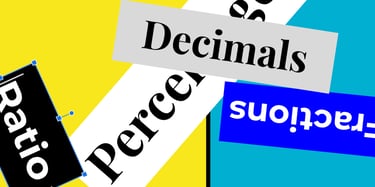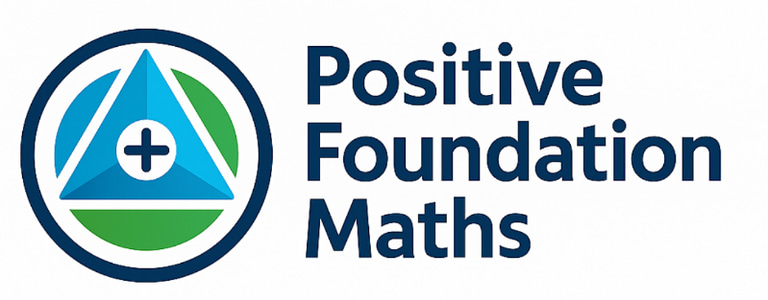Successful revision methods for low prior-attainers in maths
How to create maths lessons with in-built revision that is well-structured, scaffolded, predictable and 'pacy' for KS4 students who feel they have had limited prior academic success in the maths classroom.
3/21/20254 min read
Students in low-attaining sets, sense they have failed to grasp important maths concepts prior to starting their KS4 lessons. They know (despite their outward teenage protestations) getting a maths GCSE is life-changing. They don't need fancy cartoons or entertaining maths teachers, they want to practise and master essential maths and then get on with life.
Low prior-attaining students need maths lessons that are well-structured, predictable and more importantly 'pacy'. Each part of the learning should be easily to replicate, low stakes, and not last too long, so if a student feels they have failed at one part, it is 'forgotten for now' and they move onto a task they can access. This reduces student anxiety on entering the classroom (and therefore poor behaviour), and shortens the perception of the length of the lesson when it is time to do the last task, the plenary.
Lessons should have a weekly structure, thereby promoting stability, predictability and a safe space in which students will feel comfortable practising mathematical exercises. In an hour's lesson, 10 minute revision starters and plenaries (including you going through the answers line by line and students self-marking and asking questions) leave a manageable 40 minutes to deliver and practise one or two 'new' key techniques relating to your specific scheme of work. Weekly revision tasks should look EXACTLY the same, with the numbers changed each day. Each question can scaffold (or not) the next question but should not be identical to the one before that. Identical maths skills replication is left for the 'middle' part of the lesson.
For low confidence learners or importantly for students that have missed some or all of the main practice a couple of weeks prior, teachers effectively will be re-teaching key concepts in the 10-minute 'top and tail' revision sessions, showing cognitive progression in the topic, however minor. It is vital that there is a connection between the focus of these questions and they are not mixed up topics, as you would do for students in more advanced learning sets, in preparation for exam conditions.
Students in low prior attaining sets, generally have social/emotional/memory issues that need a gentler approach. Teachers can safely leave mixed question practise for much later in Year 11, because cognitive scaffolding of revision topics is vital, and students are not emotionally ready to complete mixed revision questions. This is what differentiates students that appear to be making little of no progress in maths after joining secondary school with other Foundation students.
Short daily repetitive practice allows students to make more cognitive connections because they are calmer. The scaffolded 10 minute resources allow in-class differentiation by outcome and use (or not) of the calculator. For the most part the project has most success if calculators are allowed. Students have to use their 'recall' for mathematical processes and can independently review the previous day's work. Typically, students of low energy or memory really need teachers to choose their battles, and this is practical given 67% of the GCSE exam is calculator based.
Beginning and ending with a key skill practice, fosters continuity and security for students. At the beginning of the week model, teachers should explain and allow students to ask questions before they copy the method out. Ensuring students copy the workings out and the solutions at the beginning of the week, allows them to work (more) independently during the rest of the week, enabling teaching staff to set up and close down the lesson. There will always be at least one student announcing 'they know' how to do the work and refuse to get the notes down. This is usually a case of the teacher having reminded them of the required techniques and for that 10 minutes they genuinely know how to do the task, however the following day unable to complete the skill independently. If the student chooses a different valid way of working, insist on write down their method. If the school is not versed in 'Rosenshine' principles across the board, teachers will have to work harder on your learning expectations from the get go, but it is worth persevering and will lead to a calmer and more focused classroom.
It is highly recommended (but is not always possible for plenaries, when you teachers and students alike dashing to the next lesson or break) to model and ask questions of students to check for deeper understanding, without displaying the full answers with one click on the whiteboard, every single time students are self-assessing their work. There are a couple of good reasons for this:
A method that resonates with one group will not for another group, sometimes for good reasons, other times maybe not so.
Many students in low-attaining sets need a rest between writing tasks, and should they be successful in answering questions, it allows a mechanical break and self-congratulatory part of the lesson, which may have been few and far between in previous maths learning, improving the learning atmosphere in the classroom.
Students may not be in all maths lessons for a variety of reasons (hence the gaps in their mathematical learning), and require aural teaching as well as visual reminder.
Positive Foundation Project empirical studies indicate that the reason for poor outcomes is mainly not their maths. Poor English Language comprehension inhibits true deeper mathematical understanding. Therefore lots of lines of text and numbers put on the screen all at once does not precipitate an attempt to comprehend; it leads to a tick or cross on their paper, losing a great teachable moment.
Students in these classes are often weary of 'faking it till the make it' in maths. These revision methods are a way of tapping into maths understanding with minimal effort and maximum gain. Imagine if even the lowest prior-attaining students could calculate and comprehend percentages and fractions for life, albeit with the calculator on their phone? Now that would be truly life changing.


